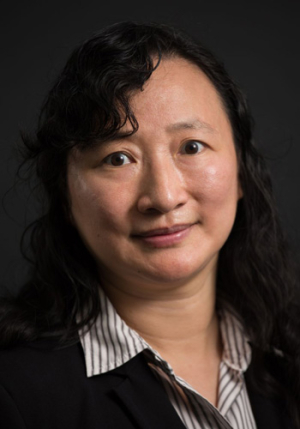Telemedicine and telesurgery applications motivate Yuhua Chen to develop more sophisticated networking equipment.
Yuhua Chen knows she’s lucky to live in Houston. The assistant professor of electrical and computer engineering with the University of Houston Cullen College of Engineering knows that, if she needs it, the world’s best doctors and hospitals are just a short drive away.
“When I think about my retirement, I know that if I get sick I can get to the medical center in just a few minutes,” she said. “But there are a lot of small towns that only have one doctor. If someone needs a specialist or an expert, they have to go somewhere else, and most likely they’ll have to fly to get there.”
It is this disparity in access to medical care based on nothing but location that motivates Chen to develop the tools for a faster, more robust and more reliable internet. She is the sole principal investigator on a recently awarded three-year, $300,000 grant from the National Science Foundation to conduct this research.
The next-generation internet infrastructure that could arise from Chen’s work would allow for the spread of telemedicine and telesurgery, in which doctors use video-conferencing technology to diagnose patients, or use a computer to control sophisticated robotics thousands of miles away to conduct a complex surgery.
The current internet infrastructure relies on network switches to direct data that arrives at an internet hub—a location where sections of the network meet—to its proper destination. Data arrives at these switches in the form of optical signals—essentially, information transmitted as light. Typically, switches convert these optical signals to electrical signals, determine where they should be sent and then convert them back to optical signals before directing them to their destination.
This process is problematic for time-sensitive data such as videos, which tend to jitter and stall on the existing internet infrastructure. Such problems occur during the conversion process because videos are given the same priority as traffic that isn’t as sensitive to delays, such as text and images. Such delays and jitters are minor annoyances to people watching Youtube videos, but can lead to serious complications during a telesurgery, where precise timing is obviously vital.
The technology that Chen is developing will effectively address such issues. Specifically, she is working to create algorithms that will be used to operate optical burst switching networks, one of the most promising optical switching technologies for the next-generation internet infrastructure. Optical burst switching, which Chen is one of the original developers of, utilizes wavelength division multiplexing (WDM). WDM relies on multiple wavelengths (essentially, different colors of light) to send several different pieces of information over the same strand of optical fiber at the same time.
Chen’s algorithms will be used to direct these different types internet traffic to their destinations without utilizing the optical-electrical-optical conversion that leads to jittering and stuttering in videos. The algorithms will also distinguish and assign high priority to time-sensitive data, such as streaming video, from data that is not so sensitive to short delays, such as text files. This would allow video to be streamed in real time without any pauses or jitters—exactly the type of video telesurgery requires.
In her research, Chen will test the algorithms she creates on traffic that is being directed by optical switches. “We are getting to a point where paper analysis is just not enough to validate the design,” Chen said. “We’re building a testbed to put all these theories to practice.”
